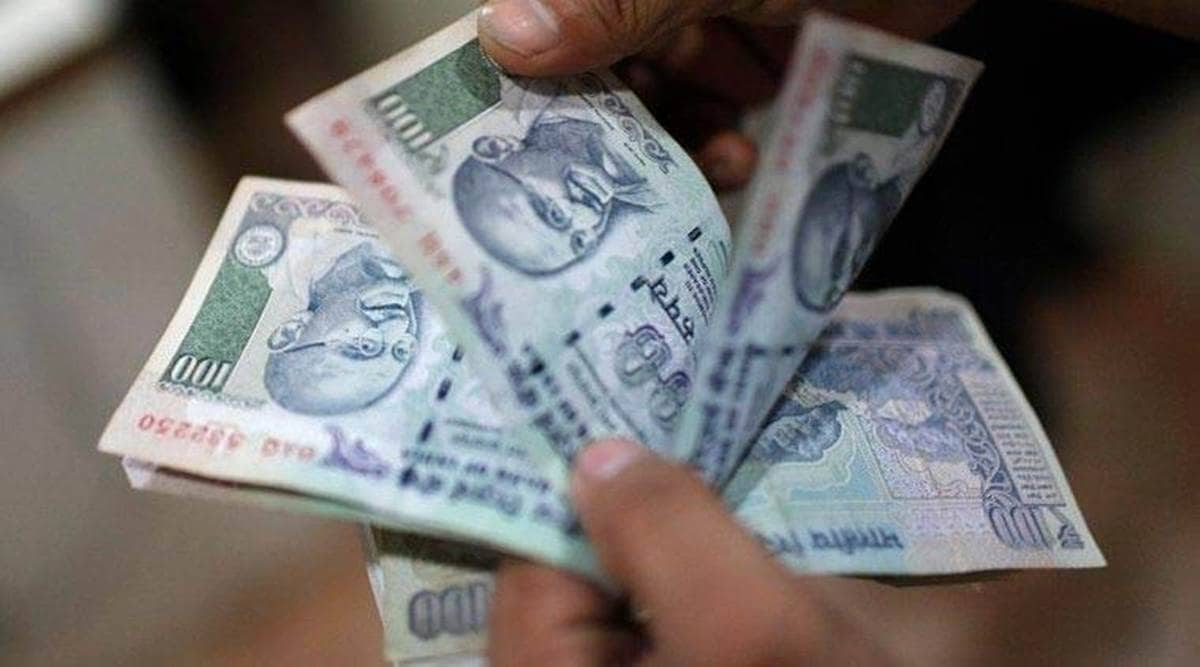 NBFCs and micro finance institutions (MFIs) are reporting sharp surges in stressed assets.
NBFCs and micro finance institutions (MFIs) are reporting sharp surges in stressed assets. WITH A number of large banks and non-banking finance companies facing fresh challenges posed by the second Covid wave, bad loans are projected to see a fresh spike as the rising stress across sectors is beginning to impact the repayment capacity of borrowers.
Analysts estimate that non-performing assets (NPAs) will jump from a little under 8 per cent in the previous fiscal year — helped by restructuring, write-offs and regulatory relaxations including a loan moratorium — to 13-15 per cent in 2021-22.
NBFCs and micro finance institutions (MFIs) are reporting sharp surges in stressed assets. “Small entrepreneurs operating in segments such as salons and restaurants, taxi operators and merchants/ traders in non-essential categories have been hit hard, and there has been no specific income support to these target groups. There has been a spectacular spike in NPAs in this category,” said a senior private sector banker, speaking to The Indian Express on condition of anonymity.
“As incomes have not been restored for more than a year now, we have no option but to take significant haircuts and write-offs,” the banker said.
Bandhan Bank, for instance, reported an 80 per cent year-on-year fall to Rs 103.03 crore in net profit for the quarter-ended March due to additional provisions on NPAs. The lender, which is focussed on micro enterprise loans, saw its gross NPAs as a percentage of total loans surging by 533 basis points to 6.81 per cent in Q4 FY21 from 1.48 per cent in Q4 FY20.
Bajaj Finance, in its recent mid-quarter update, estimated NPAs in Q1 and Q2 to be higher as lockdowns in April-May affected asset quality. “The second wave has caused a marginal increase in EMI bounce rates in Q1 FY22 over Q4 FY21. Forward flows across overdue positions were higher due to constraints on collections amidst strict lockdowns across most parts of India. As a result, the company estimates its gross NPA and net NPA in Q1 and Q2 to be higher,” it said in a stock exchange filing on June 4.
In its latest notes to financial accounts on June 4, Punjab National Bank (PNB) said: “The extent to which the Covid-19 pandemic will impact the bank’s results will depend on future developments, which are highly uncertain including among other things, the success of the vaccination drive. The major identified challenges for the bank would arise from eroding cash flows and extended working capital cycles.”
Tourism, hospitality, restaurants, salons, aviation, construction, textiles and high-contact services are among the worst-affected segments. Care Ratings has forecast NPAs to be 7.3 per cent (Rs 7.93 lakh crore) of advances as of March 2021 as against 8.5 per cent (Rs 8.86 lakh crore) in March 2020. This is expected to cross double digits and hit 15 per cent in 2021-22, experts said.
The Reserve Bank of India has also warned about the possibility of a spike in bad loans to 13.5 per cent by September 2021, from 7.5 per cent in September 2020. This works out to Rs 14.6 lakh crore of the total bank credit of Rs 108.33 lakh crore.
“It’s difficult to put a number given the moratorium and various schemes by the banks but stressed assets are estimated to be in double digits (13-15 per cent),” said Tarun Bhatia, managing director and head of Business Intelligence and Investigations, Kroll South Asia.
“It needs to be seen how companies that paid part of their instalments (maybe 1 or 2) are classified as compared to those who opted for a moratorium. Also, because of the second wave, a meaningful proportion of those who opted for moratorium would continue to struggle,” he said.
“The ability of banks and NBFCs to physically collect dues in the current environment may thus be limited even if the borrowers are in position to make good the payments. Given the loss of income or lower incomes, repayment of unsecured loans may not rank high in terms of priority for many borrowers,” said Ramya A Muraledharan, director — ratings, Brickwork Ratings.
A clear picture will emerge once the Supreme Court acts on bad loans, experts said. “Post the Supreme Court passing its order removing the standstill on asset classification, banks and NBFCs are required to record gross NPAs as per the actual days past due from Q4 of FY 21. As a result, in our view, there has been increased transparency in reporting GNPA numbers for Q4 FY21 and FY21,” Muraledharan said.
Care Ratings said pressure on asset quality is expected to continue due to restructuring especially in the MSME segment. “Retail loans, especially unsecured loans, are also expected to witness significant stress. The downside risks include lockdown in key states, which may impact the industrial as well as service segments. Another risk includes the ending of the ECLGS scheme in June 2021, which had propped up the MSME credit,” it said.
- The Indian Express website has been rated GREEN for its credibility and trustworthiness by Newsguard, a global service that rates news sources for their journalistic standards.

